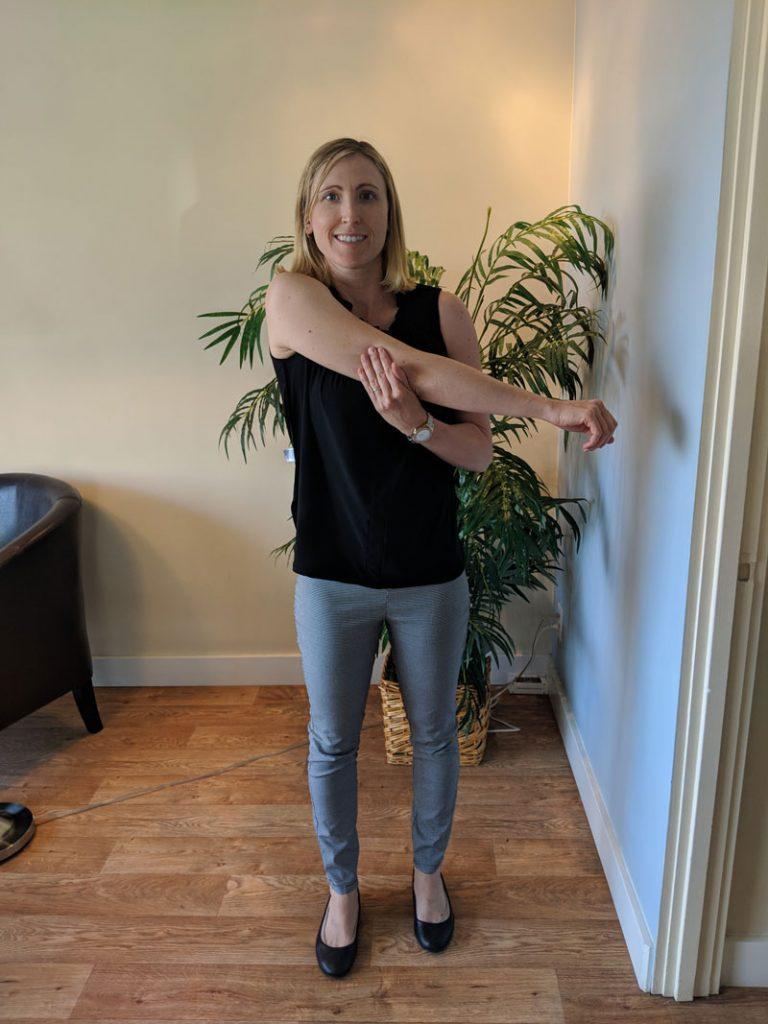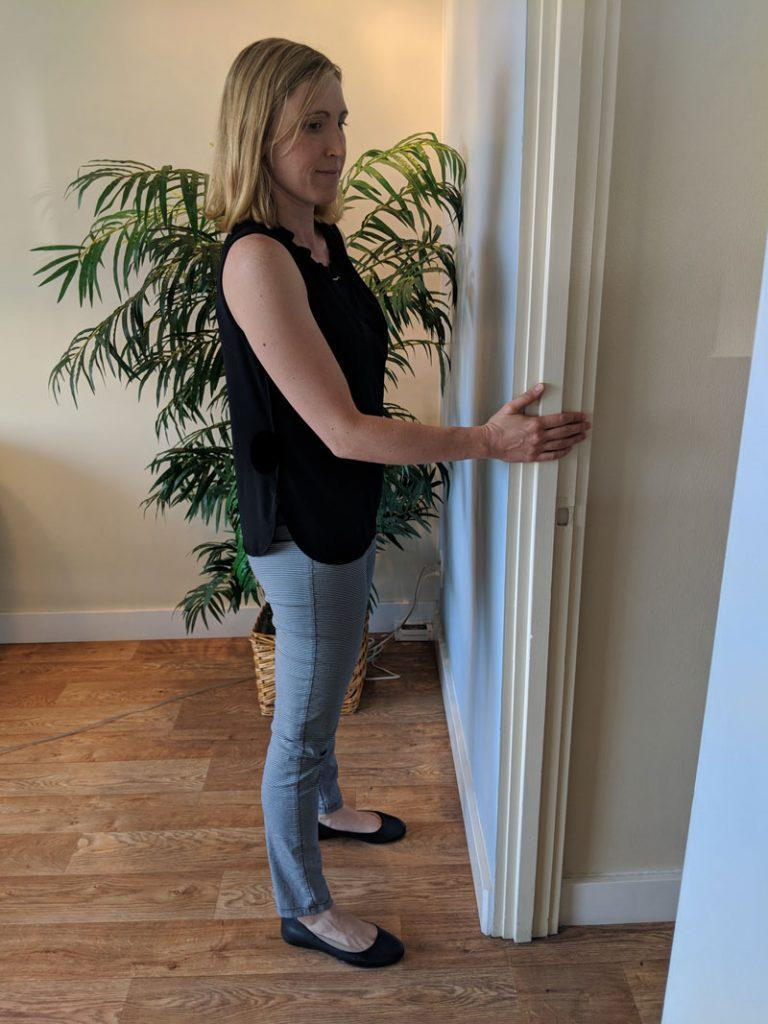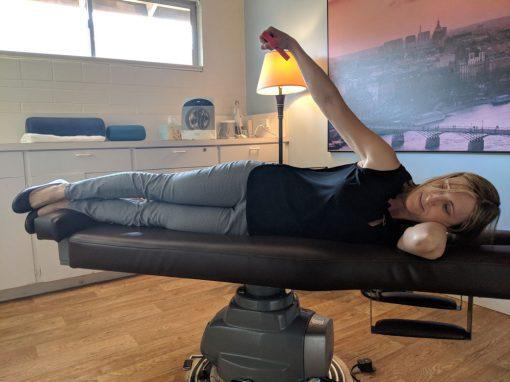
Is it painful to raise your arm…?
Here’s what you can do to help your own shoulder impingement, which is frequently what causes shoulder pain when raising your arm.
Recently I have been getting many cases in the office with shoulder issues and what to do about them. Chiropractic and especially our form of chiropractic is very effective in placing the shoulder back where it belongs and relieving the pain. There are however some things you can do at home to help your shoulder. In this article I am going to look at specifically shoulder impingement since I have seen some recent cases.
To start off what is shoulder impingement? As you can probably guess it’s when structures in the shoulder are getting pinched, mostly due to there not being enough space in the shoulder. There are two types of impingement and I’ll go through each type.
Primary shoulder impingement syndrome
Primary impingement syndrome is when the shoulders “ball” is in its socket but then rotator cuff and bursa are getting pinched off because there is something taking up the subacromial space (that’s the space between your shoulder blade and your arm) likely structures are bone spurs, or inflamed bursa.
Secondary shoulder impingement syndrome
Secondary impingement syndrome is when the rotator cuff muscles or bursa are being being pinched off because there is a problem with the “ball” centered in the socket. What happens in the “ball” slips and results in rubbing of the rotator cuff and bursa against the acromion process which is where your collar bone and shoulder meet. Reasons for this are due to loose ligaments or rotator cuff muscle weakness.
How to know what kind of shoulder impingement you have
It’s important to note that while both of these syndromes result in the same pain when raising your arm up, the treatment of the two syndromes is different. For instance, a person with primary shoulder impingement may require surgery to remove a bone spur whereas the secondary impingement can respond well to adjustments and the right exercises. The challenging part then is to know which type of impingement you have—the short answer is an MRI. The good news is that the majority of impingements syndromes are the secondary kind. In one study they randomized 125 patients with impingement syndrome not knowing if they had primary or secondary types there was a surgery group, an exercise group and a control group. They checked in with the groups 2.5 years later and found that the surgery group and the exercise group were doing better while the control group had no change. Even more interesting is there seemed to be little difference between the surgery group and the exercise group. Which begs the question as to whether or not primary impingement syndrome is either not very common at all, or it responds just as well with exercise as it does surgery. 3 other similar studies years apart came up with similar responses to impingement syndromes supporting that exercises consistently help impingment syndrome in the shoulder. Now for the exercises.
Exercises for shoulder impingement
The exercises for shoulder impingement consist of stretching and strengthening and only need to be done once a day 5 days a week for you to notice a difference. As is always the case if any of these exercises create more than discomfort but actual pain, and especially if it makes the pain worse do not continue the exercise or stretch.
 1) Wall Walk-This improves flexion (raising your arm)
1) Wall Walk-This improves flexion (raising your arm)
a. Stand facing a wall.
b. Reach out and touch the wall at the lowest point you can comfortable touch usually about the waist.
c. Next walk your fingers up the wall until you feel a gentle stretch.
d. Hold for a full 30 seconds. The goal is to feel a gentle stretch without any pain.
 2) Abduction Stretch – This improves abduction raising your arm over your head and out to the side.
2) Abduction Stretch – This improves abduction raising your arm over your head and out to the side.
a. Stand sideways against a wall.
b. Slide your elbow or hand straight up the wall until you feel a gentle stretch on the shoulder area.
c. Hold for 30 seconds.
 3) Across the Chest Stretch – This is for horizontal adduction -Your arm going across your chest.
3) Across the Chest Stretch – This is for horizontal adduction -Your arm going across your chest.
a. Stand up straight and put your hand on your elbow.
b. Press you elbow to your chest towards the opposite shoulder, no higher than at shoulder level, lower is fine especially if having hire causes pain.
Strengthening exercises for shoulder impingement
Now that the muscles have been stretched it’s time to strengthen them. Now for some more good news. In order for you to see results it has been found that doing three sets of exercises have no more benefit over doing 1 set for strengthening.
 1) Isometric External Rotation-This exercise improves rotating your arm and shoulder away from the body.
1) Isometric External Rotation-This exercise improves rotating your arm and shoulder away from the body.
a. Stand just in front of a doorway.
b. Bring your arm out to 90 degrees.
c. Place the backside of your hand on the doorway and press into the doorway for 3 seconds.
d. Relax.
e. Then repeat for a total of 30 times in a row once a day. It’s ok to work up to 30 repetitions if you can’t do all 30 in a row the first time. Again there should be no pain while doing this.
 2) Isometric Internal Rotation-This exercise improves rotating your arm and shoulder towards your body.
2) Isometric Internal Rotation-This exercise improves rotating your arm and shoulder towards your body.
a. Stand in front of a door way.
b. Put your elbow at 90 degrees.
c. Place your palm on the door way and press your hand into the doorway for three seconds.
d. Repeat 30 times.
e. Note: This is the same exercise as above but reverse, your hand is on the other side of the door pushing the opposite direction of what you did in the first one.
 3) Side-lying Abduction Exercise – Strengthens abduction brining your arm out from the side.
3) Side-lying Abduction Exercise – Strengthens abduction brining your arm out from the side.
a. Laying on your side, the shoulder you want to strengthen is on top.
b. Next hold a small weight in your hand with arm on the side.
c. Lift the weight towards the ceiling and go no higher than 45 degrees.
d. Lower and repeat working up to twenty times in a row once a day. Do not go higher than 45 degrees as that can aggravate the impingement. This is also one of the safest exercises to do to strengthen your supraspinatus muscle the most frequently torn of the rotator cuff muscles.
That’s all you need to do to start taking control of your shoulder impingement. Remember also that alignment can also greatly improve strength and speed the recovery and I always recommend natural anti-inflammatories Wobenzyme, Celedrin, and Zyflamend.

